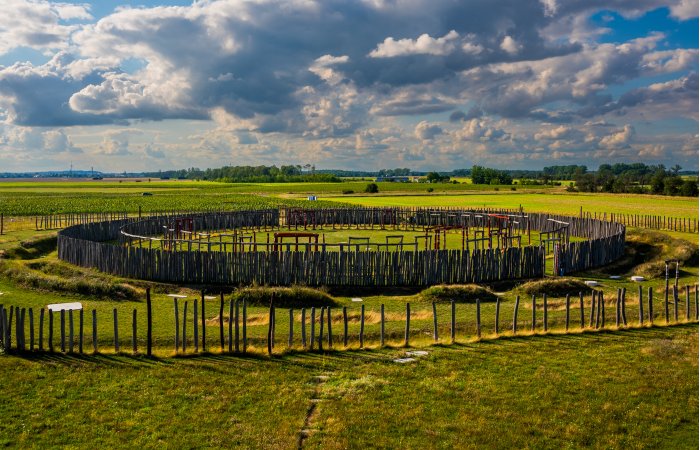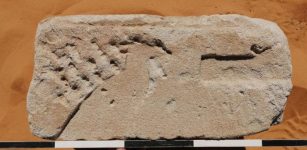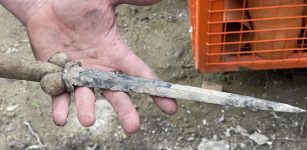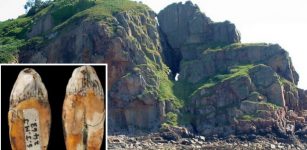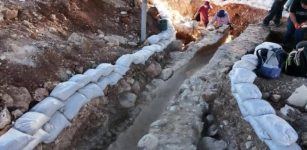Germany’s Stonehenge Pömmelte Reveals More Secrets – 140 Wooden Houses And 78 Silos Found
Conny Waters - AncientPages.com - Pömmelte, often called "Germany's Stonehenge," is an ancient monument in Saxony, eastern Germany. This archaeological site bears several similarities to its more famous British counterpart. The circular structure, dating back to the Bronze Age, consists of rings of wooden posts and pits. Like Stonehenge, Pömmelte is believed to have been a ceremonial and astronomical site for ancient peoples.
Pömmelte - Germany's Stonehenge. Credit: Adobe Stock - JEFs-FotoGalerie
Excavations have revealed evidence of ritual practices, including human sacrifices. The site was discovered in 1991 and has since been reconstructed to allow visitors to experience its layout.
Recent scientific investigations have shed more light on the significance of Pömmelte. This large, circular wooden structure near Barby, characterized by numerous posts and gates, some in colored wood, has been identified as the center of a substantial settlement during the Late Stone Age and Early Bronze Age.
From 2018 to 2022, German archaeologists conducted extensive excavations around the main structures. Their findings offer evidence of approximately 140 houses and up to 78 silos, which were used for storing various types of grain.
One of the 78 grain silos found at Pömmelte. Credit: State Office for Monument Preservation and Archaeology of Saxony-Anhalt
This year’s archaeological investigations, led by the State Office for Monument Preservation and Archaeology of Saxony-Anhalt, focused on the connecting areas northeast and northwest of the ring sanctuary. These efforts have further clarified the settlement pattern surrounding the site. Notably, three newly discovered house plans from the Bell Beaker period suggest that the predecessor of the Early Bronze Age Aunjetitz mega-settlement was the largest of its kind in Central Germany. Twelve buildings, spread across about 39,000 square meters near the sanctuary, likely housed the builders.
The research team is still working to identify house locations from the older Corded Ware culture. This earlier group had constructed a small, square sanctuary on the site and used it for burials, as evidenced by a newly discovered but poorly preserved grave. A settlement pit containing typical waste items, including pottery shards, an unusable axe, and flint blades, may indicate the presence of nearby structures that have since been lost. Before this discovery, the Corded Ware settlement could only be roughly located using scattered, displaced pottery shards.
Recent archaeological studies reveal that Pömmelte served a dual purpose: it was not only a religious center but also a substantial settlement. Evidence suggests it could have accommodated up to 1,000 residents.
The largest of the three houses discovered this year. Credit: State Office for Monument Preservation and Archaeology of Saxony-Anhalt
The discovery of silos at the site is particularly significant. These storage facilities could sustain at least 780 adults annually, indicating a well-organized food storage system.
Among the artifacts were fragments of vessels, an ox head, and remnants of mugs containing traces of dairy products. These findings provide valuable insights into the daily life and dietary habits of the site's inhabitants.
See also: More Archaeology News
Preliminary analyses conducted by the research team indicate that the artifacts originate from three distinct cultures. The timeframe for the site's occupation has been estimated to span from approximately 2800 to 2200 B.C., suggesting a long period of continuous habitation and cultural exchange.
These findings continue to enhance our understanding of the complex history and significance of the Pömmelte site, highlighting its long-term importance as a center of human activity.
Written by Conny Waters – AncientPages.com Staff Writer

